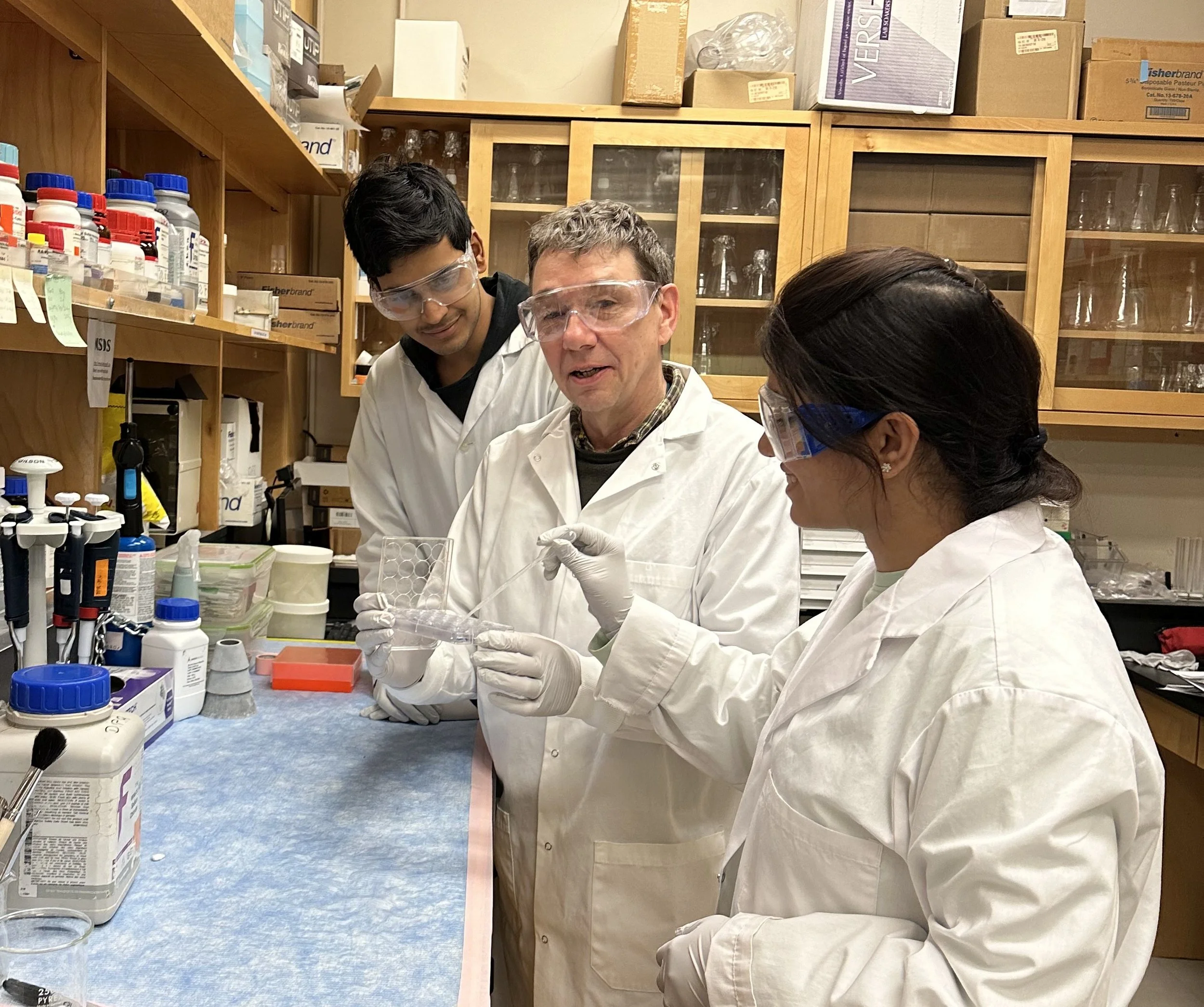Molecular mechanisms of extracellular proteins relevant to aortic aneurysm formation
$210,000
Funded by GADA Canada
March 2024 – March 2026
Professor Dieter Reinhardt, PhD.
, Distinguished James McGill Professor Department of Anatomy and Cell Biology, McGill University, Montreal, Canada
LAY ABSTRACT
The aorta consists of three separate layers. The middle layer predominantly comprises smooth muscle cells synthesizing large amounts of extracellular fibers. Elastic fibers provide elasticity to the aortic wall, which is essential for the physiology of blood flow. Fragmentation and other problems of these elastic fibers within the aortic wall are hallmarks of pathologic aortic aneurysms (bulging of the aorta) in the chest of human patients. Elastic fiber abnormalities are believed to play a critical role in the development of these aneurysms and life-threatening ruptures of the aortic wall that urgently need to be prevented. Marfan syndrome represents one of these disorders that typically develop those severe symptoms in the aorta.
Elastic fiber formation, stability, and function require many proteins, including fibronectin, fibrillins, fibulin-4 and -5, lysyl oxidases, microfibril-associated protein 4 (MFAP4), and latent TGF-beta binding protein 4 (LTBP4), among others. The Reinhardt lab has significantly contributed over many years to this field (for a complete list of references, see https://reinhardt-lab.mcgill.ca). Based on preliminary data, we propose to analyze molecular mechanisms directly relevant to elastic fiber formation and function and aortic aneurysm disease. Aim 1 will focus on how fibulin-4 and LTBP4 interact with cells and how this affects elastic fiber formation and stability. Aim 2 proposes to analyze MFAP4 with advanced high-end structural and functional methods, including cryo-electron microscopy. We will also analyze the pattern of MFAP4 in the aorta of a mouse model for Marfan syndrome. Aim 3 will determine the role of specific modifications in fibulin-5 and LTBP4 and the relevance for elastic fibers.
Together, we expect this project will provide a wealth of new information to help us understand molecular mechanisms leading to elastic fiber formation and stability and its relevance to pathological aneurysm formation. It is also possible that the new data can be used in the longer term for the generation of elastic fibers for replacement in individuals affected with Marfan syndrome and other forms of heritable aneurysm disease.
Prof. Reinhardt has enthusiastically worked on extracellular matrix biology in normal and pathological situations since 1989. He is internationally recognized for his original contributions to understanding the mechanisms and components involved in the biogenesis and function of the microfibril/elastic fiber system.
His laboratory contributed to discovering pathogenetic pathways in connective tissue disorders such as Marfan syndrome, spondylometaphyseal dysplasia, homocystinuria, and others. Prof. Reinhardt has published more than 150 peer-reviewed original articles, reviews, book chapters, and commentaries in this field. He held a Canada Research Chair for Cell-Matrix Biology from 2006-2020 and was awarded the Distinguished James McGill Professor in 2020.

